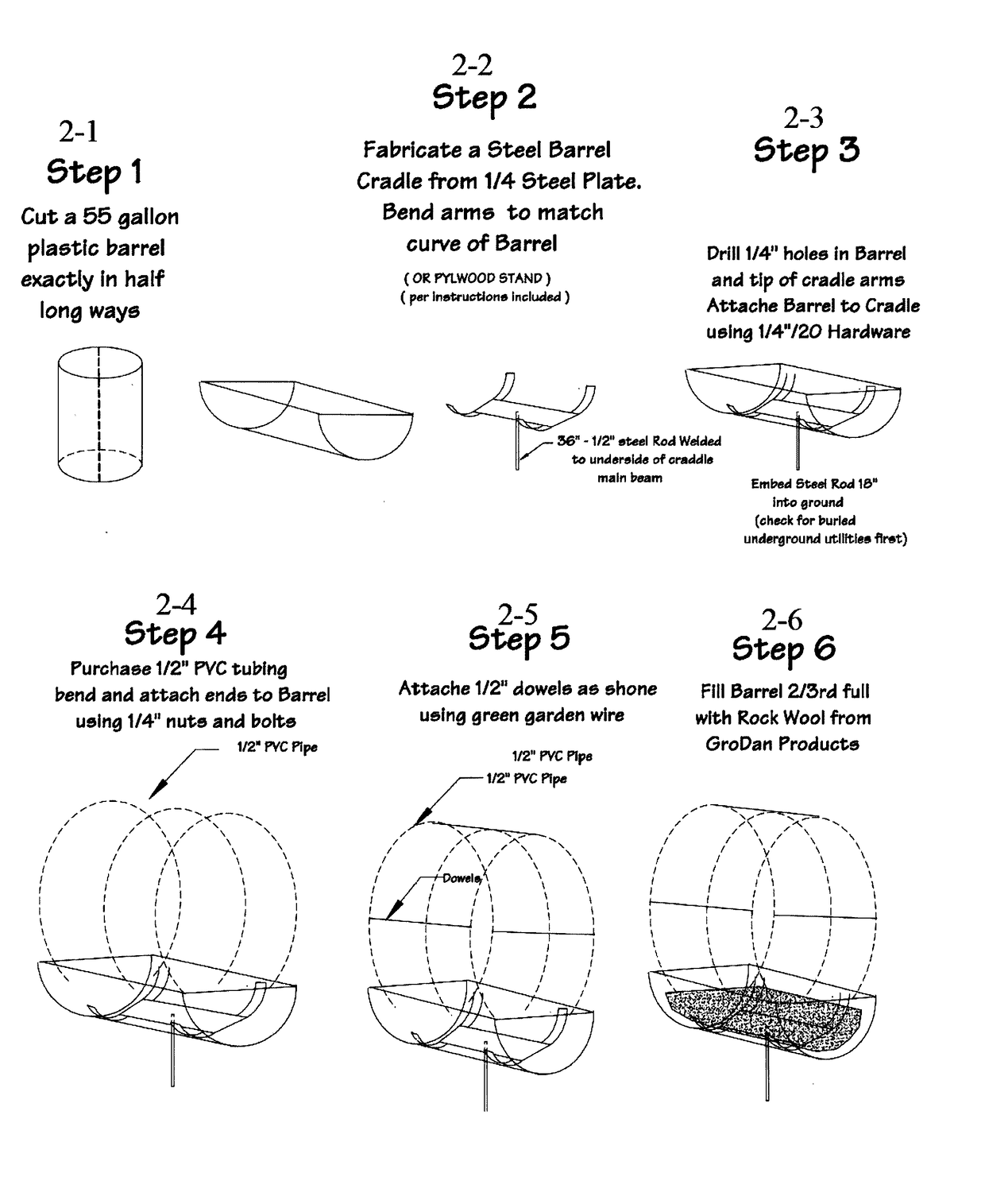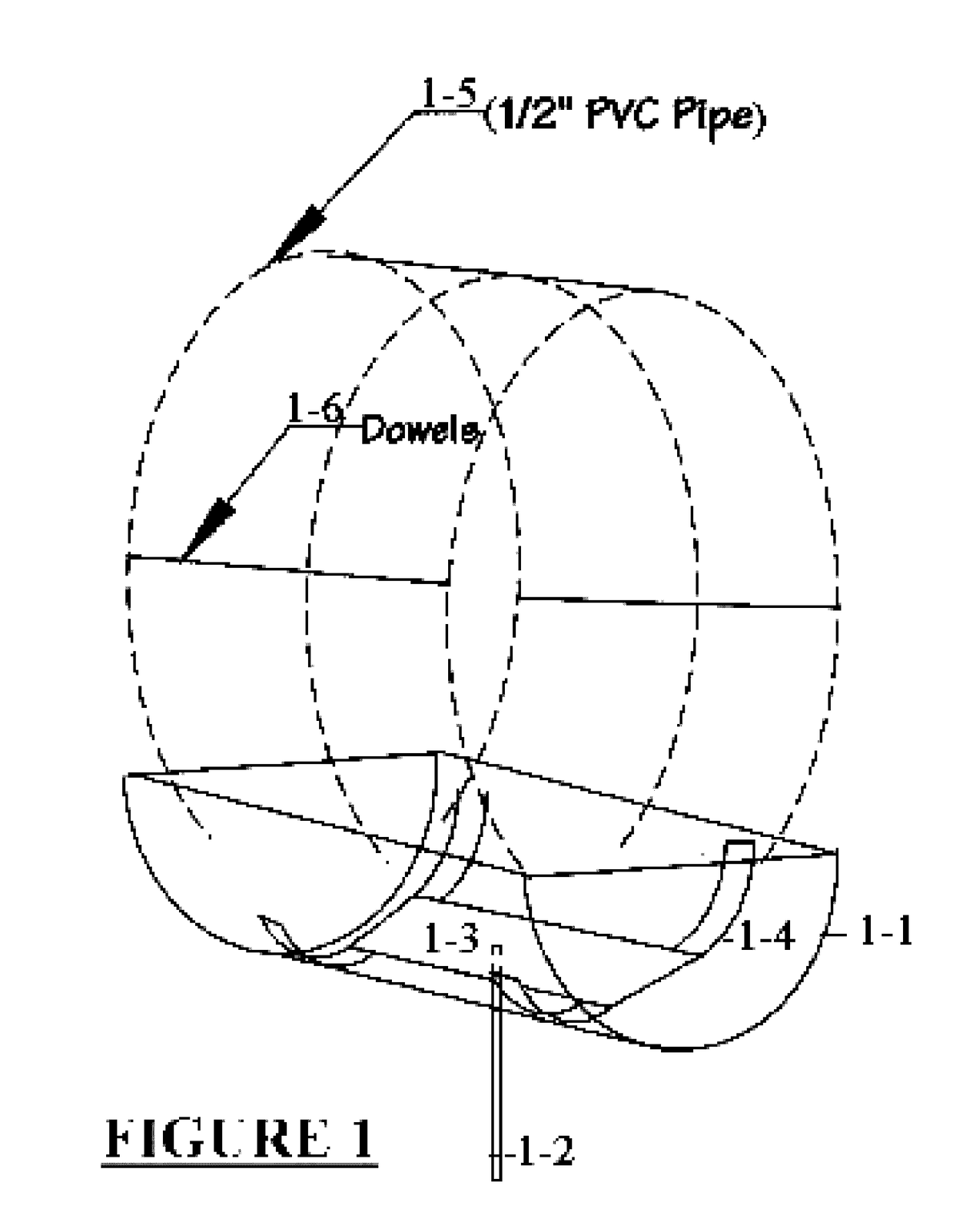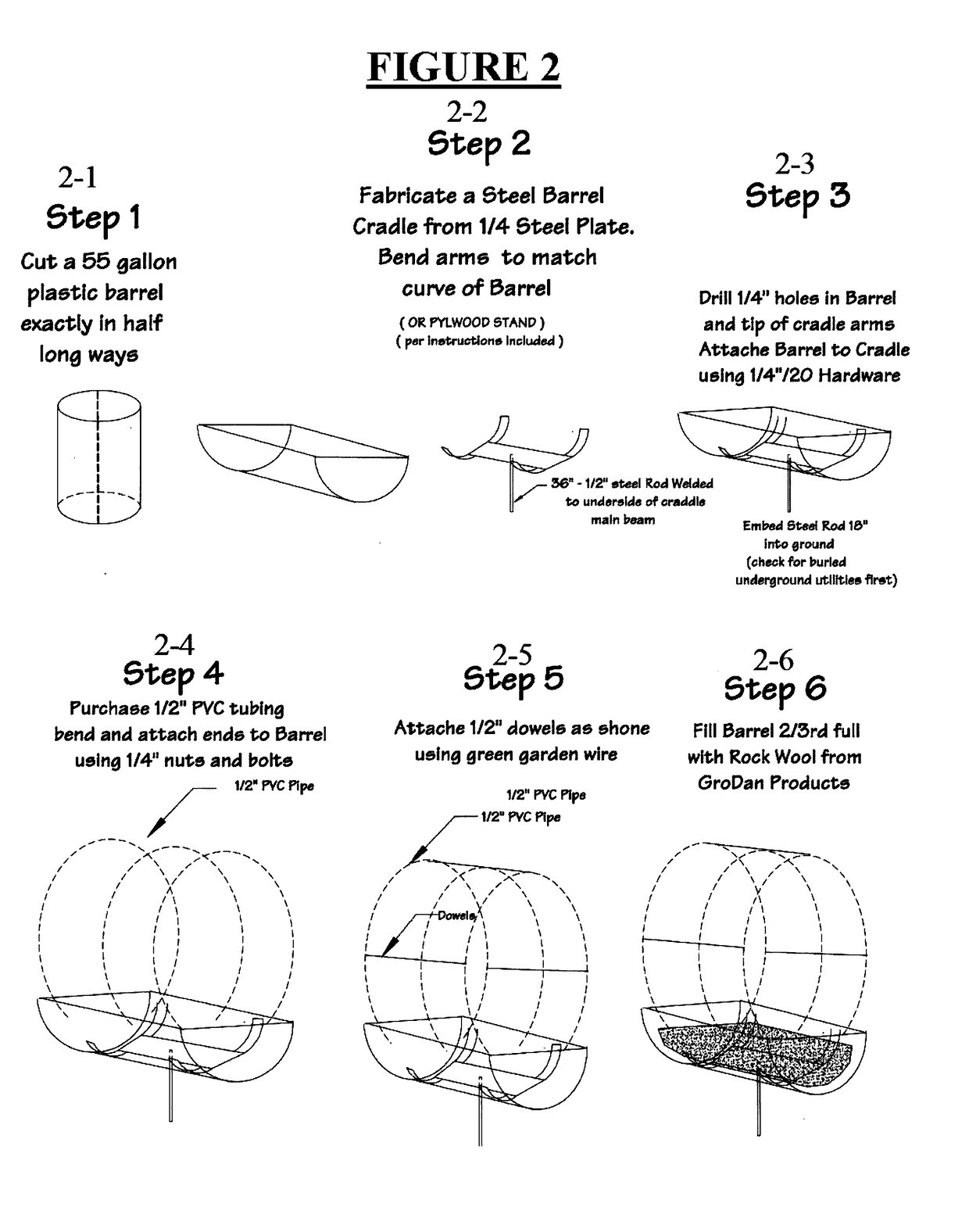Above ground gardening systems and methods
a gardening system and above-ground technology, applied in the field of above-ground gardening systems and methods, can solve the problems of splinters, internal damage, and easy bending of wooden boards, and achieve the effects of convenient access, less bending, and simple structur
- Summary
- Abstract
- Description
- Claims
- Application Information
AI Technical Summary
Benefits of technology
Problems solved by technology
Method used
Image
Examples
Embodiment Construction
[0021]According to one preferred embodiment of the above ground gardening system disclosed herein, as shown in FIG. 1, the system includes a curved bed 1-1, into which gardening soil may be deposited.
[0022]The gardening soil is preferably a rootkake formula specially designed for high yield successive gardening through a series of growing seasons and harvests.
[0023]The bed, sometimes referred to as a container, may be constructed from half of a standard 55 gallon drum or barrel as described in more detail below. Thus, an ideal size for the bed of the preferred embodiment may be capable of holding up to 27.5 gallons of water or a nearly equivalent volume of soil. Alternatively, a still useful above ground garden system may vary in bed size from a capacity of about 16 to 32 gallons, for example, by splitting standard 32 or 64 gallon barrels.
[0024]As further depicted in FIG. 1, the above ground gardening system of the preferred embodiment includes a single rod 1-2, which might also be ...
PUM
 Login to View More
Login to View More Abstract
Description
Claims
Application Information
 Login to View More
Login to View More - R&D
- Intellectual Property
- Life Sciences
- Materials
- Tech Scout
- Unparalleled Data Quality
- Higher Quality Content
- 60% Fewer Hallucinations
Browse by: Latest US Patents, China's latest patents, Technical Efficacy Thesaurus, Application Domain, Technology Topic, Popular Technical Reports.
© 2025 PatSnap. All rights reserved.Legal|Privacy policy|Modern Slavery Act Transparency Statement|Sitemap|About US| Contact US: help@patsnap.com



